 ORNITHOPODA
ORNITHOPODA ORNITHOPODA
ORNITHOPODA
| Poland 1965 | Comoro Islands 1999 | Comoro Islands 1999 | Guinea 1987 |
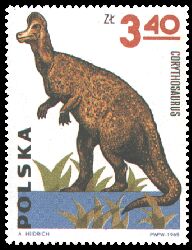 |
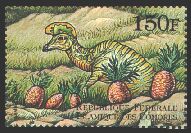 |
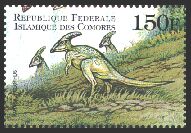 |
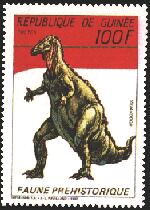 |
|---|---|---|---|
| Corythosaurus Corythosaurus (Hadrosauridae) |
Lambeosaurus Lambeosaurus (Hadrosauridae) |
Parasaurolophus Parasaurolophus (Hadrosauridae) |
Iguanodon Iguanodon (Iguanodontidae) |
| South Korea 2012 | West Sahara 1992 | South Korea 2011 |
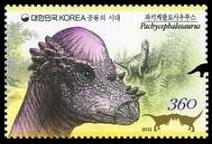 |
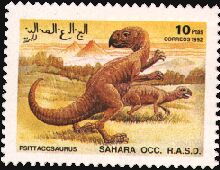 |
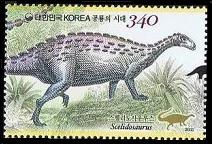 |
|---|---|---|
| Pachycephalosaurus Pachycephalosaurus (Pachycephalosauridae) |
Psittacosaurus Psittacosaurus (Psittacosauridae) |
Scelidosaurus Scelidosaurus (Scelidosauridae) |
 |
 |
 |
 |
|---|---|---|---|
| Parasaurolophus Parasaurolophus (Hadrosauridae) (ORNITHOPODA) |
Pachycephalosaurus Pachycephalosaurus (Pachycephalosauridae) (ORNITHOPODA) |
Iguanodon Iguanodon (Iguanodontidae) (ORNITHOPODA) |
Iguanodon Iguanodon (Iguanodontidae) (ORNITHOPODA) |
Corythosaurus of Ornithopoda has a strange projection on the head. While This projection has been regarded as the snorkel device which accumulated atmosphere inside for a long time. However, the capacity is too small although it stores up air. It was understood that the one that used lungs was very effective. Because the projection that became tubular ranged with a nasal cavity, the scholar that a product examined a head vertical section view of Corythosaurus came to think now when it must have been the olfactory organ which developed in particular. It smell and take the body odor of the flesh-eating dinosaur in this olfactory organ quickly, and it will be it escapes in at full speed, and to have been able to suppose.
Iguanodon (the meaning of the tooth such as the iguana) of Brornithopoda is famous as a dinosaur discovered first in the world. While Dr. British Gideon Mantell took Mrs. Mary in 1822 and went to the house of the patient, Mrs. Mary found the mysterious tooth on the road from the mountain of the stone which there was. The stone which this tooth was in was a thing of the stonepits of the Dillgate forest. It had a bone and several teeth of huge reptiles by this time, but say that it was a thing without what it watched totally different. When he showed it to French anatomist Qubie, Qubie said that it was the incisor of the upper jaw of the rhinoceros. And he showed it to Professor Buckland and Conibea at the age of Geological Society of London but a good result was not provided. The Dr. Mantell named it Iguanodon associated with an iguana by a suggestion of Conibea in 1825.
 NEXT
NEXT
 to Tree of Reptiles
to Tree of Reptiles
 to HomePage
to HomePage